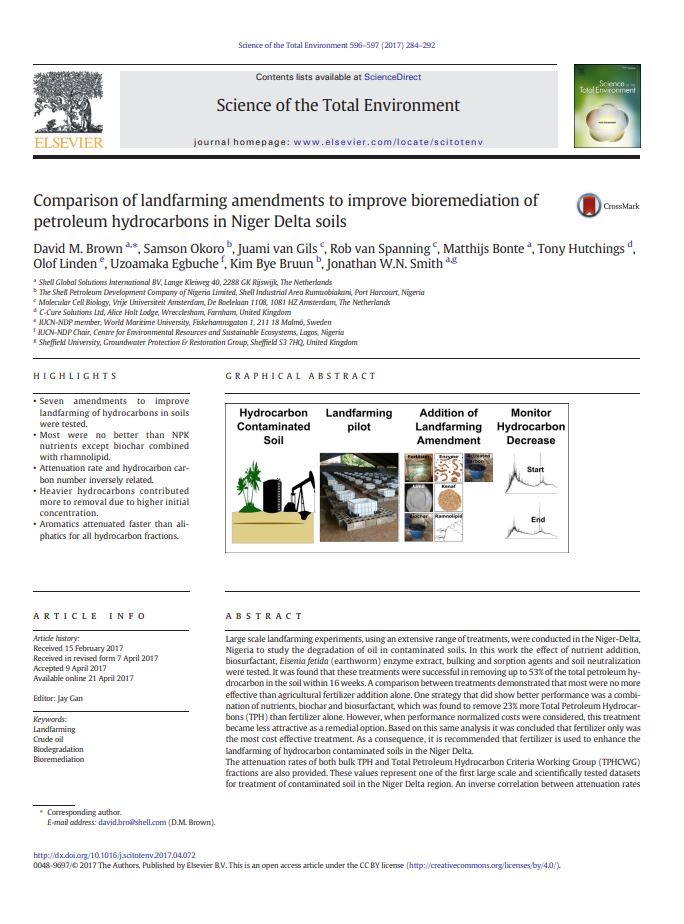Comparison of landfarming amendments to improve bioremediation of petroleum hydrocarbons in Niger Delta soils
Authors: David M. Brown, Samson Okoro, Juami van Gils, Rob van Spanning, Matthijs Bonte, Tony Hutchings, Olof Linden, Uzoamaka Egbuche, Kim Bye Bruun, Jonathan W.N. Smith,
Date: 2017
Large scale landfarming experiments, using an extensive range of treatments, were conducted in the Niger-Delta, Nigeria to study the degradation of oil in contaminated soils. In this work the effect of nutrient addition, biosurfactant, Eisenia fetida (earthworm) enzyme extract, bulking and sorption agents and soil neutralization were tested. It was found that these treatments were successful in removing up to 53% of the total petroleum hydrocarbon in the soil within 16 weeks. A comparison between treatments demonstrated that most were no more effective than agricultural fertilizer addition alone. One strategy that did show better performance was a combination of nutrients, biochar and biosurfactant, which was found to remove 23% more Total Petroleum Hydrocarbons (TPH) than fertilizer alone. However, when performance normalized costs were considered, this treatment became less attractive as a remedial option. Based on this same analysis it was concluded that fertilizer only was the most cost effective treatment. As a consequence, it is recommended that fertilizer is used to enhance the landfarming of hydrocarbon contaminated soils in the Niger Delta.
The attenuation rates of both bulk TPH and Total Petroleum Hydrocarbon Criteria Working Group (TPHCWG) fractions are also provided. These values represent one of the first large-scale and scientifically tested datasets for treatment of contaminated soil in the Niger Delta region. An inverse correlation between attenuation rates and hydrocarbon molecular weight was observed with heavy fractions showing much slower degradation rates than lighter fractions. Despite this difference, the bioremediation process resulted in significant removal of all TPH compounds independent of carbon number.




